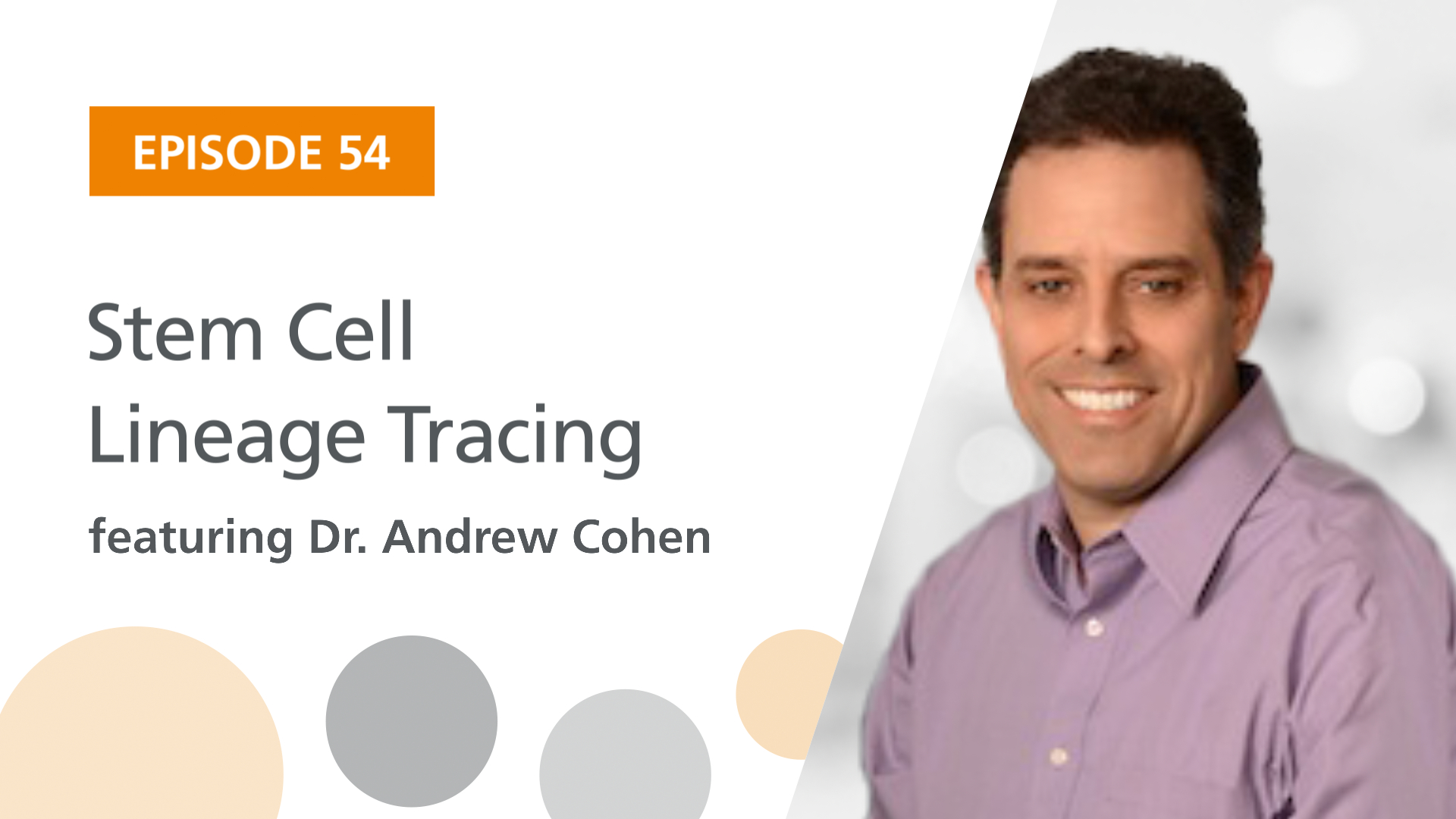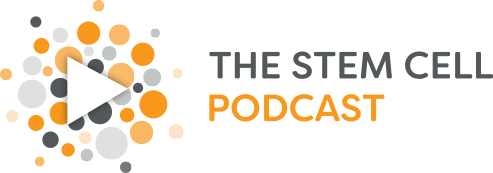
Podcast: Play in new window
Guest:
Dr. Andrew Cohen, Associate Professor at Drexel University, discusses his work on creating new software and programs to track stem cell lineages using time lapse video data.
Resources and Links
Antidepressants plus Blood-Thinners Slow Down Brain Cancer – Ecole Polytechnique Fédérale de Lausanne scientists found that combining antidepressants with anticoagulants slows down brain tumors in mice.
Seasonal Body Clocks Are Controlled By ‘Calendar Cells’: Scientists Identify Proteins that Determine When Mammals Mate – According to this article, experts found that “calendar cells” in a structure called the ‘pars tuberalis’ respond according to how much daylight there is and can change dramatically over the year, driving the seasonal reproductive cycle.
Wine’s Darkest Secret Revealed – It’s All in the Fungi – This article reveals that a type of yeast called Saccharomyces cerevisiae, makes a “small but significant” contribution to a wine’s flavor and taste.
Edges of Human Embryonic Stem Cell Colonies Display Distinct Mechanical Properties and Differentiation Potential – This article describes the results found after the live imaging of the differentiation process of human embryonic stem cells, and reveals that cells on the outer edge of the undifferentiated colony begin to differentiate first and remain on the perimeter of the colony to eventually form a band of differentiation.
Orthostatic Hypotension May Indicate Neurological Disease – According to this article, orthostatic hypotension may be an early warning sign of a serious neurological disease and may be associated with an increased risk of premature death.
Why People in ‘Tall’ Nations Are More Likely to Be Slim – Researchers from Australia looked at nearly 9,500 people in 14 European countries and found a strong connection between genes that boost height and those associated with lower amounts of body fat.
Salsalate Drug Offers New Hope for Treating Alzheimer’s Disease and FTD – Scientists from the Gladstone Institutes discovered that salsalate, a drug used to treat rheumatoid arthritis, effectively reversed tau-related dysfunction in an animal model of frontotemporal dementia (FTD).
A Barrier against Brain Stem Cell Aging – Scientists from the University of Zurich identified a diffusion barrier that regulates the sorting of damaged proteins during cell division.
New Study Finds Brain Disease in 95% of Deceased NFL Players – Researchers found evidence of brain disease in 95% of brains tested belongs to former NFL players with the repeated minor head trauma as the biggest risk to neurological health for footballers.
Pinpointing Punishment – This study describes a new study co-authored by Joshua Buckholtz, an Assistant Professor of Psychology, René Marois, professor and chair of psychology at Vanderbilt and colleagues, explaining how a brain region called the dorsolateral prefrontal cortex coordinates third party punishment decisions of the type made by judges and juries.
UK Scientists Apply for License to Edit Genes in Human Embryos – Scientists from London’s Francis Crick Institute have asked for permission to edit the genomes of human embryos use CRISPR/Cas9 technology — a request that could lead to the world’s first approval of such research by a national regulatory body.
New Technique Lets Scientists Better See, Study Interface Where Two Cells Touch – University of Buffalo researchers and their colleagues at other institutions conducted a study to better understand myelin and the fatty insulator that enables communication between nerve cells. They studied how damage to myelin occurs, and how that damage may be repaired.
Sonogenetics Is a Non-Invasive Approach to Activating Neurons in Caenorhabditis elegans – Researchers demonstrate the use of low-pressure ultrasound as a non-invasive trigger to activate specific ultrasonically sensitized neurons in the nematode, Caenorhabditis elegans.
Stem Cell Manufacturing Now Ready – This article announces the availability of master cell banks for induced pluripotent stem cells, hoping for U.S. Food and Drug Administration’s approval on its manufacturing process.
cGMP-Manufactured Human Induced Pluripotent Stem Cells Are Available for Pre-Clinical and Clinical Applications – In this article, researchers develop a process for the manufacturing of induced pluripotent stem cells master cell banks under current good manufacturing practice (cGMPs) and announce the availability of such banks.
SD Science Calendar: Nobels, Stem Cells and Robots – This article shows the calendar of events starting with the future of digital mobile health, Nobel prize week with predictions, stem cell meeting on the Mesa, and contextual robotics.
Failed Replications Put STAP Stem-Cell Claims to Rest – This article provides an account of the history of stimulus-triggered acquisition of pluripotency (STAP) stem cells and how multiple labs conclude that the seemingly miraculous results originated from contamination with ordinary stem cells, putting the controversy to rest.
Vatican to Host Conference on Stem Cells, Other Regenerative Medicine – The Third International Conference on the Progress of Regenerative Medicine and Its Cultural Impact will be held at the Vatican from April 28 to 30, 2016 with the goal of engaging in discussions about the potential for adult stem cells, and other ethical cellular therapies, to treat cancer, diabetes, and other debilitating medical conditions and diseases.
Hallmarks of Pluripotency – Researchers describe the functional and molecular hallmarks of pluripotent stem cells, propose a checklist for their evaluation, and illustrate how forensic genomics can validate their provenance.
Cpf1 Is a Single RNA-Guided Endonuclease of a Class 2 CRISPR-Cas System – This article reports how the researchers do the characterization of Cpf1, a putative class 2 CRISPR effector, demonstrating that Cpf1 mediates robust DNA interference with features distinct from Cas9.
Scientists Discover New System for Human Genome Editing with Potential to Increase Power and Precision of Genome Engineering – A team, including the scientist who first harnessed the revolutionary CRISPR-Cas9 system for mammalian genome editing, has now identified a different CRISPR system with the potential for even simpler and more precise genome engineering.
Deep Imaging of Bone Marrow Shows Non-Dividing Stem Cells Are Mainly Perisinusoidal – Researchers use a green fluorescent protein (GFP) knock-in for the gene Ctnnal1 in mice (α–catulinGFP), and discover that α–catulinGFP is expressed by only 0.02% of bone marrow hematopoietic cells, including almost all hematopoietic stem cells.
Hematopoietic Differentiation Is Required for Initiation of Acute Myeloid Leukemia – This article shows that myeloid differentiation to granulocyte macrophage progenitors is required for leukemia stem cell formation and acute myeloid leukemia initiation.
Generation of Self-Renewing Hepatoblasts From Human Embryonic Stem Cells by Chemical Approaches – This article describes how human embryonic stem cell-derived hepatoblasts can be captured and stably maintained using conditions previously established for mouse hepatoblast self-renewal, which includes basal media supplemented with insulin, transferrin, sodium selenite, epidermal growth factor, glycogen synthase kinase 3 inhibitor, transforming growth factor β receptor inhibitor, lysophosphatidic acid, and sphingosine 1-phosphate.
Photo Reference: Courtesy of Dr. Andrew Cohen

